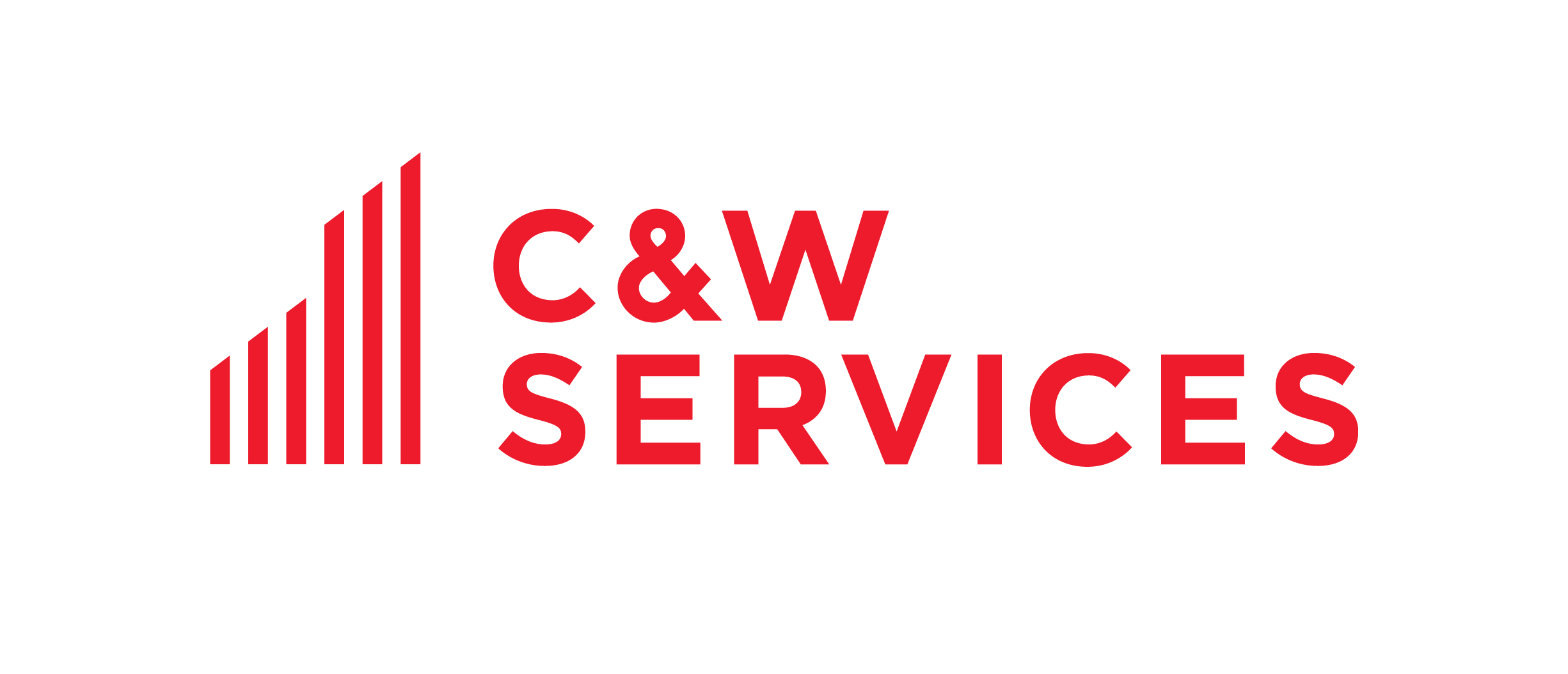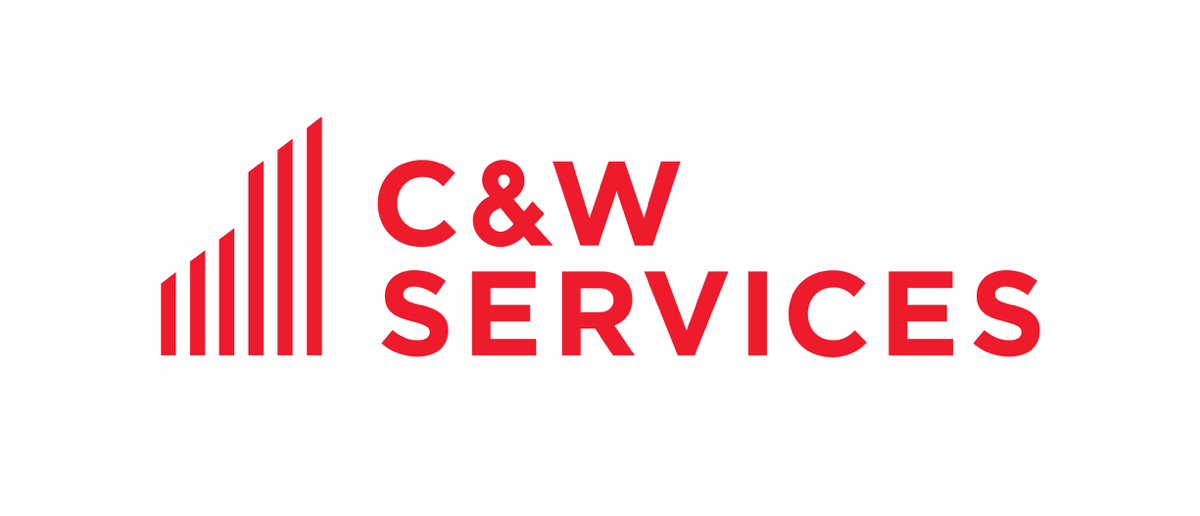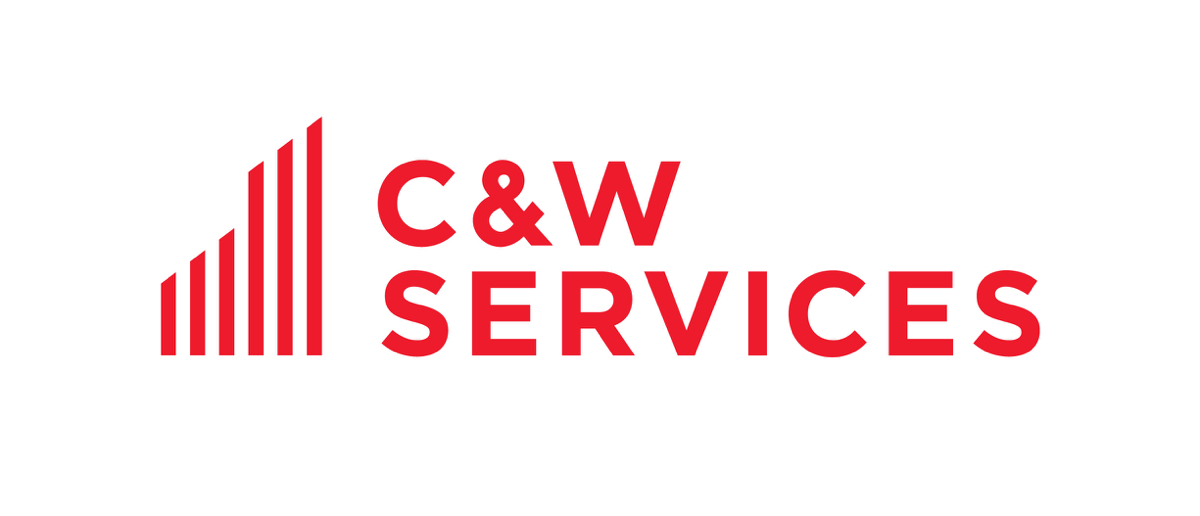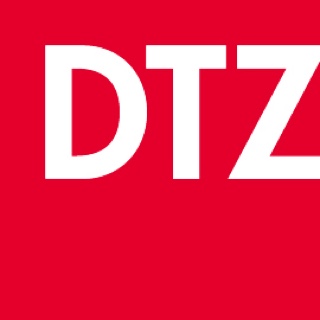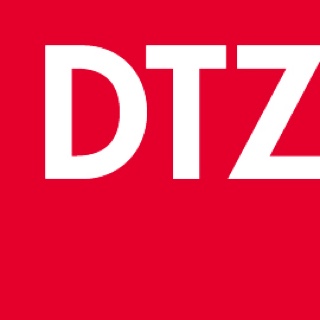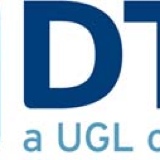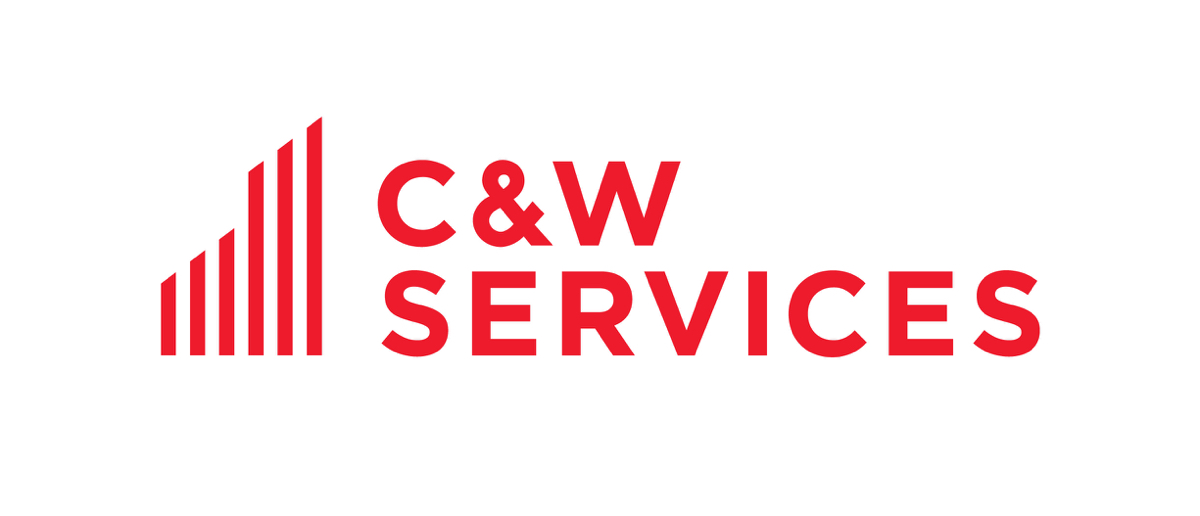Title Page
-
Conducted on
-
Prepared by
-
Location
Janitorial
GENERAL CLEANING
-
Are the chemical storage containers and spray bottles labeled properly?
-
Received new shipment of updated labeled bottles.
-
Are “Wet Floor” signs and Safety Cones and/or barricades available and utilized?
-
Replaced old signs with new ones.
-
Is the general appearance of the housekeeping / mechanical room(s) neat and orderly?
-
Storage areas and service carts are 5S
-
"Wet Floor" Signs Used When Appropriate
-
Are work orders called in for any broken or missing items?
-
Access was given in Corrigo for Manager to enter work orders.
-
Are resilient floor surfaces thoroughly swept and free of dust, dirt, or debris?
RESTROOMS
-
Are ALL soap dispensers adequately filled?
-
Tissue and towel dispensers stocked with product to ensure availability for each shift. To be inspected and restocked 2 x per shift.
-
Have restroom floors been adequately swept and mopped; grout lines clean?
-
Detail cleaning completed in Admin. Building
-
Are restroom floors clean and dry?
-
Is feminine napkin disposal clean and is a liner installed?
-
Is the restroom cleaning schedule and service sheet posted/up to date?
-
New holders were put in place for restroom checks.
-
Are partitions/locker tops clean and dust free?
-
Have the fixtures been cleaned and polished?
-
Has trash been emptied and a new liner placed in receptacle?
-
Shower walls and floors scrubbed/clean?
OFFICE/LOBBY AREAS
-
Have tables/desks been cleaned/dusted, pgones sanitized?
-
Client clears off desks when they want entire surface cleaned.
-
Have tops of door jambs, pictures, name placards etc. been dusted?
-
Has trash been emptied and a new liner placed in receptacle?
-
Is floor surface thoroughly swept/vacuumed and free of dust, dirt, or debris (check corners)
-
Is room neat/orderly with chairs placed under table/desks according to design standards?
CAFETERIA/DINING/BREAK AREAS
-
Have tables/chairs been wiped clean?
-
Has trash been emptied and a new liner placed in receptacle?
-
Have floors been adequately swept and mopped in the dining area?
-
Dining area setup (Tables, Serving Stands, etc.) to Site Standard at end of each shift.
-
Subject to change when applicable.
-
Cleanliness of food service area of satellite break rooms is maintained.
-
Are the water coolers, filtered water, and drinking water stations clean, neat, and fully operational?
-
Have floors been adequately swept and mopped on both sides of the serving line?
-
Are appliances (i.e. microwaves, refrigerators) clean, dust free and wiped down on the interior?
PRODUCTION AREA
-
Are aisles clear of debris and soil build-up?
-
Tour preparation has broadened our scope.
-
Has trash been emptied and a new liner placed in receptacle and emptied according to volume level? Receptacles will not be emptied until at least half full or as mutually designated (1/2 of container capacity or maximum acceptable weight)
-
Trash Removed from Designated Points. Site to define areas
-
Receptacles Provided in Sufficient Size/Quantity
-
Aisle demarcation lines are defined. Cleaning crew will report any deterioration issues for resolution.
-
Top scrubbed all lines for upcoming Plant tour.
-
Lower Walls/Fixed Objects - No Buildup or Dust
-
Being addressed on HSCL and in HATA.
-
Base trim Free of Obvious Damage or Marks
-
Water Fountains - Clean, Functional, Filter is current
-
Door frames free of dust buildup
-
Lighting adequate / No burned out bulbs
-
Access to the work order system have assisted in getting burned out lights replaced..
-
Are the chemical storage containers labeled properly?
-
Are SOPs developed and routinely updated?
-
Are sanitation cleaning resources tested to ensure compliance with standards?
-
Are sanitation cleaning resources trained to SOPs?
SHOWERS/LOCKER ROOMS
-
Are ALL soap dispensers adequately filled?
-
Are tissue and towel dispensers stocked with product?
-
Have restroom floors been adequately swept and mopped; grout lines clean?
-
Is feminine napkin disposal clean and is a liner installed?
-
Is the restroom cleaning schedule and service sheet posted/up to date?
-
All posted and up to date.
-
Are partitions/locker tops clean and dust free?
-
Have the fixtures been cleaned and polished?
-
Has trash been emptied and a new liner placed in receptacle?
-
Shower walls and floors scrubbed/clean?
-
Pressure washed at the beginning of the month.
-
Janitorial Services’ operating procedures and work standards are up to date,Number of Additions or Changes, SOP additions or changes are offered at a minimum of once per quarter
-
Mat utilization and placement is optimized throughout the site and throughout the year
-
Restroom Service Levels are maintained in high traffic areas at peak times, Cargill Leadership Team, No formal complaints
-
Required documentation is complete and submitted on time,Documentation completed in the agreed upon schedule
-
Janitorial Services comply with Cargill policies, especially Cargill Food Safety policy, Zero policy infractions by Supplier personnel or third party subcontractors
-
Space under locker room is free of debris and papers,Management receives fewer than 3 formal complaints per quarter
-
Lockers can be opened, closed and locked as intended
Fire / Life Safety
FIRE / LIFE SAFETY
-
All AEDs operate reliably and within Cargill and regulatory requirements
-
All first aid kits and first responders kits are fully stocked in the event of an emergency per agreed stocking levels
-
All Fire and Life Safety Systems operate reliably and within Cargill and regulatory requirements,
-
Test, monitor, operate and maintain systems and equipment to ensure they will function properly in the event of a heat, smoke, fire sprinkler water flow, manual activation or other emergency situation for which the system is designed to alert customer or external monitoring service.
-
Clean detection heads periodically and as required.
-
Ensure accurate labeling/tagging of all fire systems and fire equipment.
-
Operate, maintain and program all fire systems and equipment, including software/hardware systems, components, panels, and end devices.
-
Periodically test all alarms and systems in accordance with approved Cargill corporate, site and insurance policies as well as per government regulations, including documentation of pass / fail inspection results.
-
Immediately report all malfunctions and inoperability to Cargill.
-
Perform inspection, maintenance, and testing of all exhaust duct sprinkler systems.
-
Interface with the city fire department when required.
-
Perform required NFPA building tests.
-
Replace batteries of battery-operated sensors as needed
-
Provide 5 or 6 year fire extinguisher test (e.g. hydrotest); however, such service shall be provided under a Service Purchase Order at additional cost. Such service is not included in the Budget in Exhibit B-1.
-
Supplier is to assist and support changes made to fire systems and equipment:
-
Provide support for projects that require connection to Cargill’s fire systems or equipment. Typical work will include, but not be limited to the addition of smoke detectors/heat detectors, water flow & pressure switches, alarm valves, and sprinkler heads/piping, etc.
-
Preventive, predictive, and corrective maintenance on applicable systems.
-
Monitor and refill fire extinguishers as required. Track location of fire extinguishers and maintain existing inventory.
-
Replace non-functioning fire extinguishers from Cargill stock inventory. Non-functioning, includes but is not limited to the following:
-
Is inoperable when tested.
-
The hose or nozzle is cracked, ripped, or blocked with debris.
-
The locking pin on the handle is missing or unsealed.
-
The handle is wobbly or broken.
-
The inspection sticker or hang tag, with a record of checkups and maintenance, is missing.
Security
SECURITY
-
Post Procedures in place and updated and implemented as requested, with training records indicating all Security employees know, understand and have executed successfully all post procedure tasks with refreshers as needed to insure capability
-
Adequate Security Personnel are available per SOW
-
Weather Alert Monitoring
-
Demonstrates knowledge of Visitor Access procedures
-
Demonstrates knowledge of Authorized Entry requirements
-
Security personnel adhere to site safety protocols.
-
Are all security guards in proper uniform?
-
Are all badging files up to date and accurate?
-
Security area is neat and organized.
-
Security Supervisor demonstrates knowledge of Communication Procedures
-
Demonstrates Knowledge of Job Tasks, Hazards
-
Performs Safe Emergency Response using Proper PPE and/or routine drills conducted to ensure compliance.
-
Stops all non site dedicated vehicle entry and directs visitors to designated parking area.
-
Performs visual inspection of transport vehicles. External inspection only.
-
Security personnel demonstrates professional behavior, are efficient, friendly, polite, helpful and informative.
-
Takes necessary precautions to protect workers and property
-
Monitors critical alarms and systems
-
Emergency Equip. Inventory
-
All badging equipment is maintained and is proper working order?
-
Are keys and pass cards assigned to Security personnel routinely inspected to ensure their operation and availability?
-
Are all site patrols (tours) documented and maintained for review?
-
Are all security incident report completed as required and electronically forwarded to Client?
-
Are all site sign in logs maintained and up to date?
Grounds / Landscaping
GROUNDS
-
Turf Areas well maintained to a specific and uniform height Primary turf will be maintained at a height no shorter than 3” and shall not be taller than 6” in height.
-
Weed/Pest Control Program
-
Are SDS Sheets up to date and chemicals approved to be used on site?
-
Are shrubs trimmed and shaped properly?
-
Are trees trimmed to ensure "line of site" visability?
-
Are fence lines free of vines and weed intrusion?
-
Do mowers, weed eaters, edgers and other equipment have factory installed guards in place?
-
Is building perimeter being maintained foliage free? (2-3 feet)
-
Fertilization Program maintained.
-
Trees/Shrubs/Bed Management. All ornamental beds and tree aprons will be maintained to near 0% weed free. All tree aprons will be mulched on an annual basis. All plantings will be cut back and have leaves removed for winter lay up.
-
Mulching/pre-em herbicide program. Site will be presented with report indicating what type and amount of product was used and adherence to application schedule.
-
Watering Program - Only to be implemented during extreme weather conditions to protect sensitive plants. Sensitive planting will not display signs dues to lack of hydration.
-
Is smoking area free of liter/cigarette butts?
-
Exterior Appearance/Condition
-
Trash receptacles are clean and functional
GROUNDS EQUIPMENT
-
Turf equipment is clean and free of clipping build up. This measure applied if Lancaster equipment is utilized operator will clean equipment after each use to ensure mower deck is free of clipping build up. Operator will complete inspection report after turf maintenance activity. C&W Services site management to routinely audit and report..
-
Equipment PM Program - PMs assigned to turf equipment issued and adhere to compliance standard of 95%.
-
Shop Area Clean - Space will adhere to standard organization methodology (5S). Inspection report to indicate noncompliance.
-
Equipment Storage - Space will adhere to standard organization methodology (5S). Inspection report to indicate noncompliance.
MANAGEMENT CONTROL
-
Grounds Management Plan - Plan is developed to include tasks and schedule and updated seasonally.
-
Grounds Inspection Plan - Plan is developed to include tasks and schedule and updated seasonally.
-
Grounds Employee Training - Personnel are required to adhere to P&G and industry safety protocols
-
Exterior areas maintain an orderly and professional appearance (north side)
-
Exterior areas maintain an attractive appearance (south side)
-
Closely monitor and manage irrigation systems to maximize water usage efficiency, Irrigation system is maintained per specifications; city water use requirements are adhered to
-
Trafficked areas are kept clear of safety hazards, Zero recordable incidents
-
No holes in chain-link, No formal complaints
-
Turnstiles, opening gates and armed gates are fully functional, Zero unplanned interruptions
-
Exterior areas maintain an orderly and professional appearance (non-production buildings and areas)
-
Exterior areas maintain an attractive appearance (production buildings and areas)
-
Trafficked areas and rails are kept clear of safety hazards, Zero recordable incidents
Grounds / Snow
GROUNDS
-
Are SDS Sheets up to date and chemicals approved to be used on site?
-
Is smoking area free of liter/cigarette butts?
-
Exterior Appearance/Condition
-
Trash receptacles are clean and functional
GROUNDS EQUIPMENT
-
Shop Area Clean - Space will adhere to standard organization methodology (5S). Inspection report to indicate noncompliance.
-
Equipment Storage - Space will adhere to standard organization methodology (5S). Inspection report to indicate noncompliance.
MANAGEMENT CONTROL
-
Grounds Management Plan - Plan is developed to include tasks and schedule and updated seasonally.
-
Grounds Inspection Plan - Plan is developed to include tasks and schedule and updated seasonally.
-
Grounds Employee Training - Personnel are required to adhere to GMOL and industry safety protocols
-
Exterior areas maintain an orderly and professional appearance (north side)
-
Exterior areas maintain an attractive appearance (south side)
-
Trafficked areas are kept clear of safety hazards, Zero recordable incidents
-
Minimize safety hazards from ice and snow in trafficked areas, Zero incidents resulting in potential safety violations or service interruptions
-
All sidewalks, walking paths, and entrances are clear of snow and ice, Fewer than 2 formal complaints per quarter with regards to clearing of snow and ice on sidewalks, walking paths, and entrances
-
Minimal disruption to normal traffic patterns due to snow and ice, Zero incidents resulting in traffic disruptions for Cargill-owned roads
-
Minimal damage or loss of use of Cargill assets relating to snow, snow loads, and ice., Zero asset damage or loss due to Supplier error or negligence
-
No holes in chain-link, No formal complaints
-
Turnstiles, opening gates and armed gates are fully functional, Zero unplanned interruptions
-
Exterior areas maintain an orderly and professional appearance (non-production buildings and areas)
-
Exterior areas maintain an attractive appearance (production buildings and areas)
-
Trafficked areas and rails are kept clear of safety hazards, Zero recordable incidents
Rail
RAIL
-
No interruptions to Cargill’s operations due to Supplier’s performance or failure to perform, No unplanned failures for essential assets; no more than one unplanned failure per quarter per building for non-essential assets
-
Adhere to all federal, state, or local regulations, including the Federal Railroad Administration (FRA) requirements.
-
Adhere to industry standards and best practices, including the American Railway Engineering and Maintenance-of-Way Association (AREMA).
-
Perform inspection, maintenance, and repair of all rail equipment and systems.
-
Schedule inspections on a regular basis, at least twice per year.
-
Inspections, at a minimum, shall include the following:
-
walking the entire track;
-
visually assessing the state of the sub-ballast, shoulder, ballast, rail, ties, ballast, switches, and turnouts;
-
identification of any stability issues with the sub-ballast, shoulder, and ballast;
-
identification of any safety hazards or obstacles that impede the operation of the rail equipment and systems
-
recommendations of scheduled maintenance and repairs; and
-
recommendations of any longer-term refurbishment and/or replacement.
-
Document inspection of rail equipment and systems.
-
Documentation shall include as found condition, results discussed with Cargill contact, and recommendations for any and all work needed in the next twelve months.
-
Immediately report all malfunctions and inoperability to Cargill.
-
Develop and maintain a long term plan for the management of the rail system assets, including track maintenance.
-
Ensure rail ballasts, sub-ballasts, and shoulders are properly maintained and are operating properly, including providing appropriate support and water drainage. Repair soft spots as needed.
-
Maintain ballast as needed, including tamping, removal, and/or cleaning. Such cleaning shall minimize damage to the ballast.
-
Ensure railroad ties operate appropriately, including appropriate transfer of rail loads to the ballast as well as holding the rails to the required rail gauge.
-
Monitor wear and degradation of rails and railroad ties. Replace and/or repair rails, frogs, and railroad ties as needed, including installation of small sections of track.
-
Tighten loose track components as needed.
-
Lubricate and adjust railroad switches as needed.
-
Ensure railroad switching system is fully operational, including repair of frogs, replacement of knife on switch, and welding of switch as needed.
-
Minimize vegetation on and around the tracks to ensure no interference with track structure and rail operations.
-
Clean, touch up and repair any damage to signs.
-
Maintain and repair associated lighting and digital displays.
-
Maintain and repair railroad gate arms as needed.
-
Ensure coordination of activities to minimize interruptions and disruptions to Cargill’s operations, and eliminate safety hazards.
-
Communicate requirements related to inspection, maintenance, and repair to rail operators, including requirements to run at reduced speeds after maintenance has been performed.
Scales
SCALES
-
Scales are calibrated and certified in compliance with Cargill policy and government regulations, including NIST requirements, Zero formal reports of non-compliance with applicable laws, rules, and regulations
-
All scales are reliable, fully functional, and provide accurate measurements due to Supplier’s performance or failure to perform, Zero incidents resulting in inaccurate measurement or services interruptions
-
No interruptions to Cargill’s operations due to Supplier’s performance or failure to perform, No unplanned failures for essential assets; no more than one unplanned failure per quarter per building for non-essential assets
-
Inspect all mechanics of scale system to ensure scale is functioning properly, including but not limited to scale approaches, pit condition, walls, scale deck, concrete and steel condition, moving parts, wear on suspension, pivots and bearings, stands, stand bolts, alignment, grout, condition of grease packing, levers, weighbridge (condition of steel), bumper bolts properly adjusted, suspension system, dumper scales (deck alignment, cylinder clearance and limit switch indicators, clearance, operation, cone shim)
-
Inspect all electrical components of scale system to ensure scale is functioning properly, including but not limited to AC power (115 VAC +/- 10%, less than 5 VAC rounded to neutral), AC power cables, communications cables, load cell, connection to instrument or J-box, ground wire, surge protection, test of uninterruptible power supply (unplug and test voltage, cables and cable connections), time and date properly set, printer conditions (cycled properly, prints clearly), scale program set to proper setting, and on lever systems with single point load cells (check voltage isolators installed directly above and below the load cell, check for electrical path of least resistance – braided strap – attached above the top isolator attaching to below the lower isolator).
-
Inspect indicators and printers for proper operation, print clarity, and conformance to Weights and Measures scale codes.
-
Inspect scale back-up systems, including but not limited to condition of beam or dial, balance and alignment, lubrication, pivots / bearings, dash pot oil (if dial), cleanliness (rodents / insects), and test report in addition to the indicator test.
-
Inspect floor scales, including feet, level and stability of platform, junction box and seal, load cell cables, and home run cables.
-
Inspect mechanical and electrical truck scales, including scale deck, condition of concrete, load cell piers, load cells and cables attached at load cells, junction boxes for loose screws or loose grommets, and home run cables.
-
Inspect bench scales, including removing weighing platform to inspect weighing understructure and components, feet, level and stability of platform, load cell and load cell mounting system, and overload stops.
-
Inspect mechanical hopper scales, including pivot and bearings, weighing structure and components, lever system (e.g. rust and corrosion), and levers for level and plumb condition.
-
Inspect fully electronic scales, including load cell and load cell mounting system, home run cables, and junction box for proper seal (cover and fittings)
-
Inspect additional components of the scale system upon Cargill’s request.
-
Document inspection, adjustment, calibration, and certification of scale systems.
-
Documentation shall include as found condition – calibration, as left condition – calibration, completed Cargill approved check list and test report, results discussed with Cargill contact, and recommendations for any and all work needed in the next twelve months.
-
Report and file appropriate inspection and calibration certification with local and state government.
-
Maintain and repair mechanical components, electrical components, programming and system interfaces, and back-up systems to the scale system to ensure all are functioning properly.
-
Ensure accurate identification markings for all scale systems are in place and legible, including Brand and Model Number.
-
Consult with scale operator to determine if any known problems exist. Address any known problems to ensure scale is functioning properly.
-
Periodically clean scale indicators, digital indicators, photo eyes, keypads, and printers.
-
Periodically check and lubricate print gears.
-
Ensure printer system is clean and functioning properly.
-
Remove debris and obstructions that may hinder proper scale operations.
-
Ensure scales and components are sealed to prevent unauthorized adjustments.
-
Immediately report all malfunctions and inoperability to Cargill.
-
Provide a complete written report on the condition and accuracy of the scale, including notification of any required repairs or deficiencies.
-
Use weight cart to test individual sections of scale with minimum of 20,000 pounds certified traceable weight or drop 20,000 pounds of test weight on each section or the metric equivalent. Adjust as required by Weights and Measures standards. All sections should match.
-
Test and certify rail scales - heavy capacity service vehicle – minimum 30,000 pounds test weights or per local serving Railroad requirements
-
Make a calibration adjustment on overall scale using no less than 20,000 pounds certified weight or the metric equivalent.
-
Complete a strain test using test truck. As example: unload weights off the edge of the truck scale. Pull the test truck onto the scale. Note the weight. Load weights into truck. Make sure the values add up correctly.
-
After inspection and adjustment as needed, scales should be checked and calibrated with certified test weights traceable to N.I.S.T. and adjusted to conform to performance requirements and tolerances in accordance to N.I.S.T.
-
Document inspection, calibration, and certification of scale systems.
-
Documentation shall include as found condition – calibration, as left condition – calibration, completed Cargill approved check list and test report, results discussed with Cargill contact, and recommendations for any and all work needed in the next twelve months.
-
Report and file appropriate inspection and calibration certification with local and state government.
-
Instruct scale operating and maintenance personnel of proper operation and maintenance procedures, including training.
-
Advise Cargill of any product updates, new products and applications.
Office / Food / Vending
OFFICE / FOOD / VENDING
-
Are break areas cleaned and sanitized daily?
-
Issue resolution process with the provider is fast, timely, thorough, and requires minimum oversight/follow-up
-
Are the vending machines adequately stocked?
-
Are all stocked supplies maintained and up to date?
-
Are all state, local and corporate inspections updated and in compliance?
-
Snacks and beverages are available; minimal Vending Machine stock outs
-
Securing snacks and beverages does not disrupt Cargill’s operations, No unscheduled down time for essential assets or services caused by Supplier or Supplier’s subcontractors
-
Snacks and beverages respect sanitary expectations and Cargill’s policies, Zero policy infractions by Supplier personnel or third party subcontractors
-
Users are satisfied with selection of snacks and beverages, No unplanned failures for essential assets; no more than one unplanned failure per quarter per building for non-essential assets
CONFERENCE ROOM SERVICES
-
Meetings are not delayed due to lack of Audio-Video equipment or failure of Audio-Video equipment
DOCUMENT MANAGEMENT
-
Destruction of confidential documents complies with Cargill’s Records and Information Management policies, All documentation is shredded per site policies
-
No loss of confidential information and material, All documentation is shredded per site policies
OFFICE MAC (MOVE ADDS CHANGES)
-
Work is performed and delivered on agreed upon schedule
-
Pre-Move material is distributed in a timely manner
-
Move activities will be done to minimize impact on end users
-
Office and conference room space is fully functional
Roads and Walkways
ROADS AND WALKWAYS
-
Are parking lot lights working properly?
-
Are flags out, in good shape and match the proper pole?
-
No debris is accumulating in corners.
-
Is smoking area free of liter/cigarette butts?
-
Are sidewalks free of danger? (slips, trips and falls)
-
Are signs visible and in good condition?
-
Are lots and curbs painted and stripes visible?
-
Are all flat surface areas (parking areas, sidewalks, macadam) free of potholes and/or curb damage?
-
Parking lot lighting is adequate and well maintained.
-
Active pavements, roads, and outdoor structures shall be kept clear of obstructions, hazardous conditions or extra-ordinary standing water, Minimal incidents resulting in traffic disruptions for Cargill-owned roads
-
Pavement markings, safety lines, and signage are clearly visible, Fewer than 2 formal complaints per quarter with regards to pavement markings, safety lines, and signage
-
Exterior areas are well lit and contribute to site security and safety requirements, Zero incidents resulting in potential safety violations or service interruptions
-
Outside equipment is functional per manufacturer’s requirements and/or industry standards, No equipment failures resulting in operational disruption
Pest Control
PEST MANAGEMENT
-
Pest control systems are in place to prevent, control and monitor pest activity. Local pest control system includes the following:<br>- A documented control procedure.<br>- A plan of the site showing the locations of all pest control devices. These types devices are specified, located and installed in an effective manner.<br>- Data on the use and operation of pesticides and control devices. Report to indicate if and what ype of pesticides were applied if any.<br>- Details of the inspection and maintenance of all control devices. Inspection report to indicate all traps were visit by pest control technician.<br>- Review of inspection data highlighting the risk areas of infestation.<br>- Recommendations for facility improvements to minimize infestation risks and prevent repeat infestation.<br>- Timetable or plan for inspection and treatment. Inspections are documented to determine potential high-risk areas for proper follow-up.
-
Are SDS Sheets up to date and chemicals approved to be used on site
-
Pest Control reports include what was found and what actions were taken. C&W Services ensures that action is taken on all recommendations and actions implemented are documented.
-
The storage, consumption and disposal of food is managed to minimize the potential for contamination of product and attracting of pests.
-
Pest control devices are used in a way that do not attract pests into the facility.
-
All pesticides have regulatory approval for their intended use and method of application. Preventive measures are employed to prevent contamination of products. Exterior doors (including dock doors) are not left open unless they are protected by effective insect/pest control devices (such as screens or other methods proven to provide a barrier to insect/pest entry).
-
Incoming and outgoing trucks and incoming materials are inspected to be sure they are free of pests. If pests are found, the truck is rejected or delivery is refused.
-
The UV bulbs in insect traps are replaced at least annually, preferably at the beginning of the insect season.
-
Pest control devices are protected from damage. They are inspected regularly to determine the types of pests being caught and to ensure they still work.
-
Facilities are properly maintained. This includes:
-
- Walls, roofs and ceilings are kept clean and free from leaks and chipped or peeling paint.
-
- A perimeter around the buildings is kept free of vegetation to discourage the presence of pests (excluding appropriately designed office areas).
-
- Grounds and roadways are properly maintained to prevent standing water.
-
- Cracks/crevices/penetrations are sealed.
MAIL DISTRIBUTION
-
Was the mail picked up per established schedule, Management receives fewer than 3 formal complaints per quarter
-
Was the mail delivered per established schedule, Management receives fewer than 3 formal complaints per quarter
-
Was all undeliverable mail investigated and resolved, Management receives fewer than 3 formal complaints per quarter
-
Was mail delivered to the local post office per established schedule, Management receives fewer than 3 formal complaints per quarter
-
Assisted and performed special mailings as requested by Client, Management receives fewer than 3 formal complaints per quarter
Building Maintenance
BUILDING MAINTENANCE
-
Building interiors present a safe and aesthetically pleasing appearance, Zero safety incidents related to Building Interior functions; Building Interior work orders are in accordance with the work order priorities
-
Furnishings and fixtures are maintained in a safe, functional, and clean manner, and in accordance with Cargill directions, Zero safety incidents related to Building Interior functions; Building inspections proactively identify building interior issues;
-
Minimal interruptions, disruptions to Cargill’s operations arising from unavailability or failures of elevator systems, No unplanned failures for essential assets; no more than one unplanned failure per quarter per building for non-essential assets
-
Refrigerators, freezers, and microwaves are maintained in a safe, functional, and sanitary manner, and in accordance with Cargill directions, Zero unplanned outages
-
Automatic doors are maintained in a safe and functional manner, and in accordance with Cargill directions, Zero unplanned outages
-
No safety or security hazards arise from condition of exterior or interior structural assets due to Supplier’s performance or failure to perform, Zero incident reports as a result of negligence or omission
-
No leaks or seepages of building external surfaces due to Supplier’s performance or failure to perform, Leak issues are analyzed and addressed (repair or workaround) at Priority 1 service level upon issue discovery/notification; preventive maintenance program results in no leaks
-
Roof membrane integrity is not compromised by Supplier’s performance or failure to perform, Roofing issues are analyzed and addressed (repair or workaround) at Priority 1 service level upon issue discovery/notification; preventive maintenance program results in no leaks
-
Pest management problems are minimized as a result of building envelope integrity, No pest incursions are attributable to building envelope integrity in GMP and vivarium areas; response to issues and efficient root cause analysis completed within 24 hours of identification
-
No safety or compliance incidents relating to failures of building indoor, outdoor, or emergency lighting systems due to Supplier’s performance or failure to perform, Zero incidents resulting in potential safety violations or service interruptions
-
All plumbing systems are reliable due to Supplier’s performance or failure to perform, Plumbing trouble calls are responded to at Priority 1 service level.
-
No interruptions to Cargill’s operations due to Supplier’s performance or failure to perform, No unscheduled down time for essential assets or services caused by Supplier or Supplier’s subcontractors
-
No infrastructure or asset damage due to plumbing leaks due to Supplier’s performance or failure to perform, Zero infrastructure or asset damage loss due to Supplier error or negligence
-
All Safety Showers operate reliably and within Cargill and regulatory requirements due to Supplier’s performance or failure to perform, Zero incidents resulting in potential safety violations or service interruptions
-
No interruptions, disruptions or losses from failure of electrical systems due to Supplier’s performance or failure to perform, Zero unplanned interruptions resulting from plant electrical equipment
-
All established safety processes and procedures are followed (PPE, etc.), Zero safety incidents
-
System maintenance and operations complies with Cargill's corporate and site policies, Zero incidents resulting in potential safety violations or service interruptions
-
Readers, printers, cards, and CCTVs are maintained in a safe and functional manner, and in accordance with Cargill directions, Zero unplanned interruptions
-
All utilities-owned meters are read as per each site Supplement’s schedule, Documentation completed in the agreed upon schedule
-
Utilities consumption is updated as per each site Supplement’s schedule and is accurate, Documentation completed in the agreed upon schedule
-
Minimal interruptions, disruptions to Cargill’s operations arising from unavailability or failures of HVAC systems (non-production), No unplanned failures for essential assets; no more than one unplanned failure per quarter per building for non-essential assets
-
No regulatory findings for all supported space (non-production)Zero regulatory findings resulting from HVAC system operations
Waste
WASTE EQUIPMENT
-
Equipment availability
-
Equipment free of debris
-
PM compliance
-
Free of hydraulic leaks
-
Safety devices in working order
Safety
SAFETY / RISK MANAGEMENT
-
FSP knowledge of Asbestos Hazard Emergency Response Act Training (AHERA)
-
Procedures for Equip Failure
-
Haz Mat Training
-
Fed/State/Local Insps on File
-
EPA Emg Spill #'s Posted
-
PCB Transformers Identified
-
Emergency #'s Posted
-
C&W Services HSE training up to date (new employees are required to make up training that was missed).
-
C&W Services Job Safety Analysis (JSA) training up to date. (C&W Services provides generic JSA in Janitorial, Mechanical, Electrical, Landscaping,/Grounds, and Maintenance. Each site will use this JSA or modify to meet the specific needs of the site.)
-
Safety Data Sheets are available to all employees ( C&W Services and customers) for every chemical that is utilized on site. Due to OSHA changing the requirements of the Hazard Communication the site must be compliant with requirement dates set by C&W Corporate HSE or the customer, whichever is more stringent.
-
Personal Protective Equipment (PPE) Assessment been completed and implemented. Are employees compliant with wearing the proper PPE for all jobs/tasks.
-
C&W Services employees know where they are to report during an emergency. C&W Services employees know that they are not to fight fires, however, they are allowed to use fire extinguishers to clear a path to escape from a fire/
-
C&W Services employees know to utilize safe lifting principals when manually lifting an object.
-
Hand and Power Tools are inspected prior to each use and annually by a C&W Services manager.
-
Ladder use is restricted until after training occurs. Each ladder is inspected by the employee prior to use (defective ladders are removed from service). Employees use the three-point system of ascending and descending a ladder. Employees never step on the top two rungs of an A-Framer ladder. all straight ladders set against a wall have at least three rungs above the top edge and are tied off.
-
C&W Services employees do not clean up or handle blood or other bodily fluids unless they have received Blood Borne Pathogen (BBP) training.
-
C&W Services employees never sign any manifests or paperwork for any waste that is removed.
-
Lockout Tag out (LOTO) procedures are followed and employees have been reviewed by the supervisor annually regarding these procedures.
-
Powered Industrial Vehicle (PIV) drivers have been certified (every three years) on the particular PIV that they are using.
-
Hot Work permits are used for all Welding, Cutting, or Brazing Work and maintained for the length of the contract.
MANAGEMENT ACTIVITIES
IFM MANAGEMENT PROCESS ITEMS
-
No interruptions to operations, No unscheduled down time for essential assets or services caused by Supplier or Supplier’s Subcontractors
-
No recordable safety incidents related to Facility Services within Supplier’s responsibility, No recordable OSHA/MSHA incidents
-
No repeat failures, maintenance requirements, or incidents related to previously conducted Supplier activities, Zero repeat failures on same component or same element of a system from Supplier controllable factors
-
Service Levels are well documented and accurately reflect Cargill service requirements for the assets, systems and areas covered, Negotiated and agreed upon Service Levels are tracked by the Supplier
-
Supplier shall adhere to Service Levels defined in the Agreement and shall make every effort to remedy any situation where performance falls outside of defined Service Levels, 100 % of reports are accurate, timely, and provide useful data for relevant business performance. Reports continuously evolve to provide more details for current relevant subject matter
-
Reports are timely, well documented, and accurately reflect expected Cargill requirements, 100 % of reports are accurate, timely, and provide useful data for relevant business performance. Reports continuously evolve to provide more details for current relevant subject matter
-
Supplier personnel responsible for Facility Services will communicate regularly and effectively with Cargill
-
User problems with Facility Services are addressed before they become formal complaints, Comparison of Site Population generated Work Orders versus Supplier generated Work Orders (Target 50% Site Population; 50% Supplier generated)
-
No interruptions, disruptions or losses to essential assets or operations arising from equipment failures or controllable outages due to Supplier’s performance or failure to perform, No unscheduled down time for essential assets.
-
Minimal interruptions, disruptions or losses to non-essential assets or non-core operations arising from equipment failures or controllable outages, >95% scheduled uptime on systems.
-
Ensure safety, legal or compliance incidents arising from equipment failures or controllable outages are within Cargill specified guidelines, 100% in compliance w/ relevant requirements. Environmental, safety and legal requirements identified and programs in place and all criteria tracked and adhered to
-
Supplier will perform all required Facility Services maintenance planning and scheduling activities, MXSP - 95%, ATDD - 95%, 95% scheduling accuracy
-
Supplier will adhere to all Cargill work specifications and guidelines, No (0) documented actions not in line with Cargill specifications per year
-
Supplier aligns activities requiring shutdown with Cargill Plant Leadership (e.g. Maintenance & Reliability, EH&S) and site shutdown schedules. Communication plan approved by Cargill as appropriate
-
Cargill does not pay for services or materials covered under warranty or service contracts, Goal is $0 for warranty repairs. All equipment and systems warranty agreements recorded and all deficiencies checked against active warranty periods
-
Supplier can quickly obtain current information and generate customized reports relating to performance and condition of specific assets, scheduled work, technician work time, asset repair histories and Service Levels.Requests for documentation are responded to within one business day
-
Information contained in CMMS is complete, up to date, useful and convenient to access.Reports are 98% accurate based on an annual verification of report samples
-
Supplier personnel possess all necessary qualifications, certifications and experience appropriate to the work they perform for Cargill, All required qualifications and certifications are documented and available within one business day upon request
-
Supplier personnel conduct themselves in a professional, honest and customer service friendly manner
-
Supplier personnel will maintain a professional appearance within Cargill dress standards
-
Supplier personnel will preventively report deficiencies or issues observed in facilities before these create problems for users, Number of self-reported deficiencies (not resulting from operator error or negligence) increases each contract year
-
Supplier-occupied spaces and related equipment are kept in safe, sanitary and orderly condition, No more than one formal complaint from Leadership Team per year
-
Minimal damage or disruption to Cargill or Cargill employee property or business arising from Supplier activities, Zero property loss due to Supplier error or negligence
-
No security incidents relating to Supplier activities, Zero formal security incidents relating to Supplier activities
-
Supplier, Supplier personnel, and Subcontractors comply fully with Cargill security policies and activities, and with related Cargill and law enforcement activities and investigations, Zero formal reports of non-compliance with Cargill security or law enforcement agencies
-
No Supplier safety compliance incidents relating to facilities or Facility Services, No recordable OSHA/MSHA incidents
-
Safety records for Supplier personnel and Supplier Subcontractors comply with regulatory requirements, No recordable OSHA/MSHA incidents
-
No violations of applicable laws, rules and regulations relating to Facility Services, Zero formal reports of non-compliance with applicable laws, rules, and regulations
-
Prompt remedy of any legal or regulatory notice of violation, Remediation plan created and approved within five business days or sooner if required by Regulatory Agency
-
No environmental incidents (i.e., actions not resulting in AHJ notice of violation) arising from Supplier activities, Zero environmental incidents arising from Supplier activities
-
No environmental violation notices (i.e., actions resulting in AHJ notice of violation) arising from Supplier activities, Zero environmental incidents arising from Supplier activities
-
No unapproved or improperly registered chemicals stored, used, or disposed at any site, Spot checks reveal zero unapproved or improperly registered chemicals stored, used or disposed at any site
-
Compliance with all EH&S programs by Supplier and Supplier Subcontractors, Zero EH&S policy infractions by Supplier personnel or third party Subcontractors
-
Maintain all equipment within AHJ, Cargill and OEM specifications, Zero equipment failures during use
-
Assure safe work practices are executed for all workplace activities, Zero EH&S policy infractions by Supplier personnel or third party Subcontractors
-
Work closely with designated Cargill personnel to update and train personnel on the emergency response program (Business Continuity Program).All Supplier personnel participate in safety training sessions
-
Respond to events, issues, and alarms impacting the facilities.Response within mutually agreed upon timeframe for each event type (alarm, weather, etc.)
-
Supplier fully adheres to all Operating Procedures. No more than one formalized action not in line with Cargill specifications per year
-
Supplier takes ownership and responsibility for maintaining, reviewing and updating all applicable SOPs and Operating Procedures and developing any new SOPs and Operating Procedures that Cargill or Supplier identifies as required to describe/define part of the scope, SOP additions or changes are offered at a minimum of once per quarter
-
Training programs are delivered for each required topic. Supplier is up to date with all training needs
-
Supplier personnel and Supplier Subcontractors achieve full compliance to training requirements within expected timeframes.Supplier is up to date with all training needs
-
Records of training are accurate and are updated within required timeframes. Supplier is up to date with all training needs
-
Training programs are developed and updated to comply with all Cargill requirements and current AHJ regulations/notifications. Supplier is up to date with all training needs
